Related Research Articles
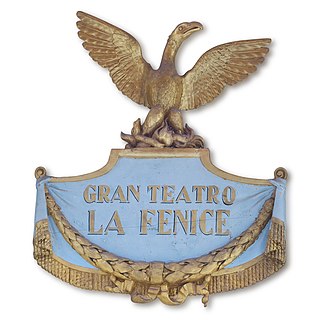
Teatro La Fenice is an opera house in Venice, Italy. It is one of "the most famous and renowned landmarks in the history of Italian theatre" and in the history of opera as a whole. Especially in the 19th century, La Fenice became the site of many famous operatic premieres at which the works of several of the four major bel canto era composers – Rossini, Bellini, Donizetti, Verdi – were performed.
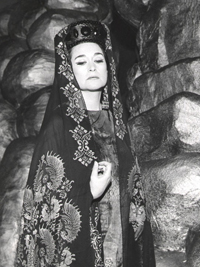
Ayşe Leyla Gencer was a Turkish operatic soprano.
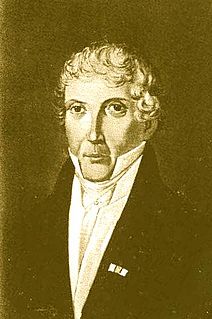
Girolamo Crescentini was a noted Italian soprano castrato, singing teacher, and composer.
Saffo may refer to:

The Teatro Lirico Giuseppe Verdi is an opera house located in Trieste, Italy and named after the composer Giuseppe Verdi. Privately constructed, it was inaugurated as the Teatro Nuovo to replace the smaller 800-seat "Cesareo Regio Teatro di San Pietro" on 21 April 1801 with a performance of Johann Simon Mayr's Ginevra di Scozia. Initially, the Nuovo had 1,400 seats. In 1821, it became known as the Teatro Grande.
Giuseppe Farinelli was an Italian composer active at the end of the 18th century and the beginning of the 19th century who excelled in writing opera buffas. Considered the successor and most successful imitator of Domenico Cimarosa, the greatest of his roughly 60 operas include I riti d'Efeso, La contadina bizzarra and Ginevra degli Almieri. More than 2/3 of his operas were produced between 1800-1810 at the height of his popularity. With the arrival of Gioachino Rossini his operas became less desirable with the public, and by 1817 his operas were no longer performed. His other compositions include 3 piano forte sonatas, 3 oratorios, 11 cantatas, 5 masses, 2 Te Deums, a Stabat mater, a Salve regina, a Tantum ergo, numerous motets, and several other sacred works.

L’occasione fa il ladro, ossia Il cambio della valigia is an opera in one act by Gioachino Rossini to an Italian libretto by Luigi Prividali, based on Le prétendu par hasard, ou L’occasion fait le larron, an 1810 vaudeville by Eugène Scribe.

Giacomo David, was a leading Italian tenor of the late 18th and early 19th centuries.

Gioseppa Maria Camilla, commonly known as Giuseppina, Grassini was a noted Italian contralto, and a singing teacher. She was also known for her affairs with Napoleon and the Duke of Wellington. She sang in various productions by composers such as Cimarosa, Cherubini and Zingarelli.
Marcello Bernardini was an Italian composer and librettist. Little is known of him, save that he wrote 37 operas in his career. His father was most likely the composer Rinaldo di Capua.
I riti d'Efeso is a dramma eroico per musica or opera in 2 acts and 26 scenes by composer Giuseppe Farinelli. The work uses an Italian language libretto by Gaetano Rossi. The work premiered at La Fenice in Venice on 26 December 1803 in a double bill with Filippo Beretti's Atamaro e Obeide.
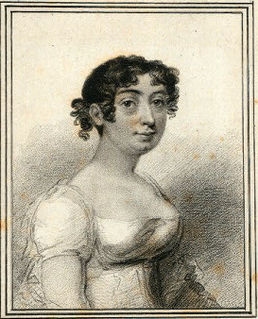
Teresa Bertinotti was a celebrated Italian soprano and voice teacher. She created leading roles in several operas, including Simon Mayr's Ginevra di Scozia.
La Lodoiska is an opera in three acts by Simon Mayr to an Italian libretto by Francesco Gonella De Ferrari. It was Mayr's second opera and premiered at La Fenice in Venice on 26 January 1796.
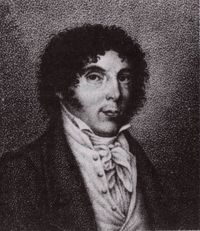
Stefano Pavesi was an Italian composer. Born in Casaletto Vaprio, he is primarily known as a prolific opera composer, but he also served as the maestro di cappella of Crema Cathedral from 1818 until his death in Crema at the age of 71.

Elisabetta Manfredini-Guarmani was an Italian opera singer best known for having created the leading soprano roles in four of Rossini's operas, roles which he wrote specifically for her voice. She was born Antonia Elisabetta Manfredini in Bologna and was the daughter of the composer and music theorist Vincenzo Manfredini. After her stage debut in 1810 when she sang in the premiere of Stefano Pavesi's Il trionfo di Gedeone at Bologna's Teatro del Corso, she went on to perform at La Fenice, La Scala, Teatro Regio di Torino, Rome's Teatro Argentina and several other opera houses, primarily in Northern Italy. In addition to the roles she created in Rossini's operas, she also sang in the world premieres of operas by several composers who are lesser known today, including Pietro Raimondi, Simon Mayr, and Ferdinando Paër. Her last known appearance was in 1828 after which there is no further trace of her. The date and place of her death are unknown.
Adelaide di Guesclino is an opera in two acts composed by Simon Mayr. The Italian libretto by Gaetano Rossi is based on Voltaire's 1734 play Adélaïde du Guesclin. The opera premiered at La Fenice in Venice on 1 May 1799 with Caterina Angiolini in the title role.
Antonio Simeone Sografi, also known as Antonio Simon, or just Antonio, was an Italian librettist and playwright.
Alessandro Pepoli (1757–1796), was an Italian librettist and author of tragedies.
Telemaco nell'isola di Calipso is dramma per musica opera by Mayr to a libretto by Antonio Simone Sograffi, composed for the Venice Carnival, 1797. The cast featured the castrato Girolamo Crescentini.
References
- ↑ Dan H. Marek - Alto: The Voice of Bel Canto 2016 p.58 1442235896 "Mayr had a long career writing opera serie that began in Venice at the Fenice with Saffo ossia I riti d'Apollo Leucadio in 1794. Mayr's early operas were cast in the familiar mold and featured castrati such as Crescentini in Saffo, Telemaco nell'isola di Calypso (1797), Alonso e Cora (1803), and Zamori ossia L'eroe dell'Indie (1804). Luigi Marchesi starred in Lodoiska (1796), Lauso e Lidia (1798), and ...